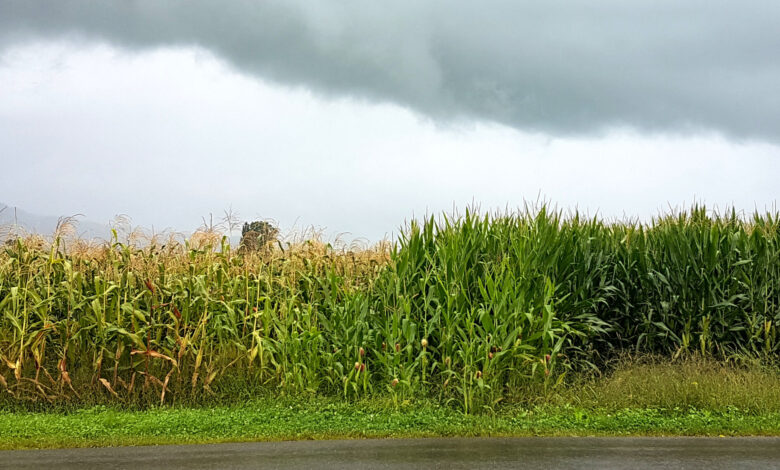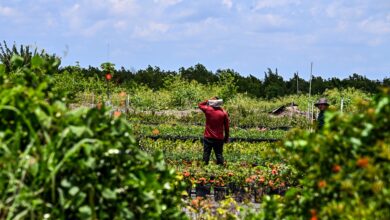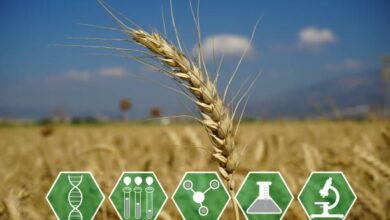
In the Southern United States, where the climate can be both a blessing and a challenge for farmers, maximizing crop yields is crucial for sustainable agriculture. With the right strategies and practices, farmers can overcome the obstacles posed by extreme weather conditions and ensure a bountiful harvest. In this comprehensive guide, we will explore various ways to increase crop yields in the Southern US.
Understanding Your Soil: The Foundation of High Crop Yields
To unlock the full potential of your crops in the Southern US, a deep dive into the characteristics of your farm’s soil is indispensable. Soil isn’t just a medium for planting; it’s a living ecosystem teeming with organisms that contribute to the health and growth of your crops. By conducting thorough soil testing, you gain critical insights into its pH levels, nutrient profiles, and textural class – information that guides the customization of fertilization and amendment strategies.
- Recognizing the varying needs of different crops, these tests enable you to tailor your agricultural practices to match the specific demands of your soil, thereby setting the stage for enhanced productivity. Adjusting your cultivation practices based on soil health not only optimizes nutrient uptake by plants but also bolsters their resilience against pests and diseases.
- Investing time and resources into understanding and improving soil health lays a solid foundation for achieving higher crop yields, making it a pivotal first step in the journey toward agricultural success in the challenging climatic conditions of the Southern United States.
Optimizing Irrigation Techniques for Drought and Flood Conditions
Effective water management through advanced irrigation techniques is paramount in the Southern US, characterized by its unpredictable droughts and floods. Employing methods such as drip irrigation can significantly enhance water use efficiency, delivering moisture directly to the plant roots where it’s most needed.
- This precision prevents wastage and ensures plants remain hydrated without over-saturating the soil, which is crucial in areas prone to flooding. For regions experiencing frequent droughts, rainwater harvesting systems can serve as a sustainable supplemental water source, capturing and storing rainwater for future use.
- Additionally, adopting soil moisture sensors and automated irrigation systems enables farmers to irrigate their fields based on real-time data, reducing unnecessary water usage and stress on crops. These innovative practices not only conserve water but also support optimal crop growth and yield, demonstrating how strategic irrigation management can mitigate the impacts of extreme weather conditions on agriculture.
Selecting the Right Crops for Your Region
The key to thriving agricultural operations in the Southern US hinges on selecting crop varieties that are not only adapted to the region’s unique climate but also resistant to local pests and diseases. This strategic choice ensures that the plants have a natural resilience against common regional challenges, potentially reducing the need for chemical interventions. Research and consultation with local agricultural extension services can provide valuable insights into which crops are currently performing well under similar conditions, including their tolerance to heat, humidity, and variability in precipitation.
- Additionally, embracing crops with shorter growing seasons can offer flexibility in planting and harvesting times, allowing farmers to navigate unpredictable weather patterns more effectively. Experimentation with different crop varieties on a smaller scale before full implementation can also help in identifying the most suitable options for your specific location.
- Emphasizing diversity in crop selection not only minimizes risk but can lead to improved soil health and ecosystem balance, contributing to the overall sustainability of farming operations. Engaging in networks or cooperatives with other local farmers can offer further opportunities to share experiences and successes with particular crop varieties, fostering a community-based approach to agricultural resilience and productivity.
Implementing Crop Rotation and Cover Crops to Boost Soil Health
Crop rotation and the use of cover crops stand out as transformative strategies for enhancing soil health, vital for elevated crop yields in the Southern US. These practices harness the natural benefits of biodiversity, breaking pest and disease cycles and fostering a more robust agricultural ecosystem. By rotating crops, farmers can naturally manage soil fertility, reducing the reliance on chemical fertilizers.
- Different crops have varying nutrient requirements and contribute uniquely to soil composition. Alternating deep and shallow rooting plants, for example, can optimize the usage of soil nutrients and improve soil structure, which enhances water infiltration and retention.
- Integrating cover crops during off-season periods plays a critical role in soil conservation, preventing erosion and nutrient runoff with their protective cover. These crops, including legumes, grasses, and crucifers, offer additional benefits such as fixing atmospheric nitrogen in the soil, a process especially beneficial for subsequent crops that demand high nitrogen levels. Furthermore, the organic matter from decomposed cover crops enriches the soil, improving its texture, fertility, and aeration, and promoting beneficial microbial activity.
- By strategically implementing these techniques, farmers not only sustain the health of their soil but also create a more resilient farming system. This approach supports sustained agricultural productivity, paving the way for increased crop yields without compromising the environmental integrity of the farm.
Integrating Pest Management Strategies to Protect Crops
In the dynamic climate of the Southern US, safeguarding crops from pests is a pivotal element in ensuring maximum yield. Through the adoption of integrated pest management (IPM) strategies, farmers can create a balanced approach to pest control, reducing reliance on synthetic pesticides while enhancing crop protection.
- IPM emphasizes the importance of understanding pest life cycles, identifying pests accurately, and monitoring their presence in the field. By employing a combination of methods such as biological control, using beneficial insects to combat harmful pests, and cultural practices like crop rotation and selecting pest-resistant crop varieties, farmers can effectively manage pest populations.
- Mechanical controls, such as traps and barriers, also play a crucial role in physically removing or preventing pests from reaching the crops. When chemical controls are necessary, IPM advocates for the targeted application of pesticides, selecting the least toxic options, and applying them at optimal times to minimize impact on non-target species and the environment.
- This strategic approach to pest management not only supports crop health and yield but also promotes a more sustainable and ecologically balanced farming ecosystem. Engaging in IPM practices enables farmers to protect their crops from pests efficiently while contributing to the broader goal of environmental stewardship.
Leveraging Technology for Precision Agriculture
The adoption of precision agriculture technologies is revolutionizing the way crops are cultivated in the Southern US, enabling farmers to enhance efficiency and yields. Tools like GPS-guided tractors, drones equipped with advanced imaging, and field sensors provide detailed insights into crop health, soil conditions, and environmental factors. These innovations allow for the precise application of water, fertilizers, and pesticides, reducing waste and improving the sustainability of farming practices.
- Data analytics platforms analyze the vast amounts of information collected, offering farmers actionable intelligence on how to adjust their management strategies for optimal growth. Furthermore, satellite imagery can track crop development over time, identifying issues like nutrient deficiencies or water stress before they impact yield.
- This precise, data-driven approach to agriculture supports the making of informed decisions that directly contribute to increased productivity and resource conservation. By integrating these technological advancements into daily operations, farmers in the Southern US are setting new standards for precision in agriculture, paving the way for a future of higher yields and enhanced farm management.
Adapting to Climate Change: Strategies for Resilience
The escalating impact of climate change in the Southern US necessitates the adoption of resilient agricultural practices to shield and sustain crop yields against the backdrop of rising temperatures, erratic rainfall, and more frequent extreme weather events.
- Diversification of crops is a key strategy, allowing farmers to spread risk and ensure some level of productivity under various conditions. Embracing climate-smart practices, such as improving water management through efficient irrigation systems and rainwater harvesting, can dramatically enhance a farm’s ability to navigate periods of drought and excessive rain.
- Further resilience can be built by incorporating agroforestry, which not only provides shade and shelter to crops but also contributes to carbon sequestration and biodiversity, enhancing the farm’s ecological resilience. The utilization of heat-tolerant and drought-resistant crop varieties offers another practical approach to maintaining productivity in the face of changing climate patterns.
- These adaptive strategies, when combined with ongoing monitoring and adjustments based on climate forecasts and trends, empower farmers in the Southern US to proactively manage their resources and safeguard their crops, ensuring agricultural sustainability and productivity in an era marked by climatic uncertainties.
Enhancing Crop Yields with Improved Fertilization Practices
In the quest to boost crop yields in the Southern US, refined fertilization practices hold a crucial role. The strategic application of fertilizers, tailored to the specific needs of the crops and the soil’s nutrient profile, can significantly enhance plant health and productivity. Key to this strategy is the reliance on detailed soil analysis, which provides insights into the soil’s fertility status and requirements. Based on these findings, farmers can customize their fertilization approach, applying the right type and amount of nutrients at the optimal times throughout the growing season.
- Incorporating organic fertilizers into the regimen offers multiple benefits, including the gradual release of nutrients, which meets the plants’ needs over time and minimizes the risk of leaching into waterways. Moreover, organic matter from these fertilizers improves soil structure, which enhances water retention and aeration, further supporting crop growth.
- The advent of precision agriculture technology has also transformed fertilization practices. Through the use of sensors and GPS technology, farmers can now apply fertilizers in a more targeted manner, ensuring that each area of the field receives exactly what it needs for maximum growth. This method reduces waste, lowers environmental impact, and increases the efficiency of fertilizer use, contributing significantly to the goal of achieving higher crop yields.
Exploring Sustainable Farming Practices to Increase Crop Yields
Sustainable farming practices are pivotal in driving higher crop yields while simultaneously caring for the earth’s ecosystems. Embracing conservation tillage is a transformative approach that minimizes soil disturbance, preserves moisture, and enhances soil structure.
- This method reduces erosion and improves water infiltration, making more water available to crops and increasing resilience against dry spells. Agroforestry, the integration of trees and shrubs into agricultural landscapes, offers myriad benefits including shade for crops, windbreaks, and the promotion of biodiversity. Such diversity can lead to healthier, more robust crops capable of withstanding pests and diseases more effectively.
- Implementing agroecology principles, which focus on mimicking natural processes to create self-sustaining farming systems, can lead to improved nutrient cycling and pest control, further bolstering crop yields. By adopting these sustainable farming practices, producers not only enhance the productivity and health of their land but also contribute to the mitigation of climate change impacts by sequestering carbon in the soil and vegetation.
- These methods exemplify how agriculture can evolve to meet the dual challenges of producing sufficient food and preserving the ecological balance, ensuring that farming remains viable and productive for future generations.
Conclusion
Achieving higher crop yields in the Southern US is an attainable goal that hinges on a blend of advanced techniques and traditional wisdom. By deeply understanding the unique attributes of their soil, farmers can tailor their practices to meet the exact needs of their crops, optimizing growth conditions from the ground up. Strategic water management, through methods such as drip irrigation and rainwater harvesting, plays a crucial role in navigating the region’s variable weather, ensuring that crops receive the hydration they need without waste. The careful selection of crop varieties suited to the local climate and resistant to pests and diseases lays a strong foundation for a thriving harvest.
Moreover, adopting sustainable farming practices, including crop rotation, the use of cover crops, and precision agriculture technology, not only enhances soil health and efficiency but also contributes to the ecological sustainability of farming operations. Embracing integrated pest management and adjusting fertilization techniques further support robust crop development. As farmers incorporate these multifaceted approaches, they not only bolster their crop yields but also fortify their resilience against the challenges of climate change, securing a productive and sustainable future for agriculture in the Southern US.





